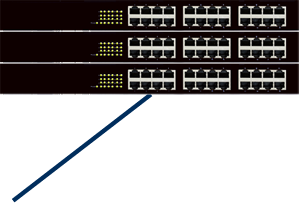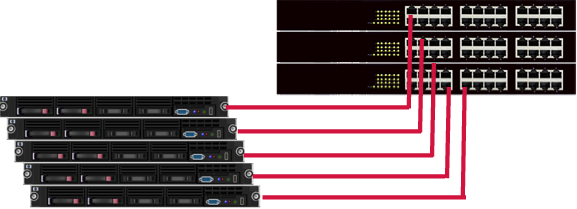2-Armed NAT is used when front/upstream link and servers are on separate subnets



• Remote Power On and Power Off
• Remote console for troubleshooting
• IPMI data such as temp and fan speeds for data center operators who use IPMI

The MGMT port provides WebMux configuration LAN access. This separate port allows out-of-band management - separate from the LAN ports used for load-balancing functions.

The BACKUP port is used for High Availability (HA) failover communication for a pair of WebMux configuration

2-Armed NAT means the client traffic comes into the WebMux, is load-balanced across the back-end servers on a separate interface (and separate IP network).
WebMux must be the default gateway for the servers.
Traffic goes back through the WebMux to the original client (being the only path for the traffic to return to the router and other networks).
At least two connections are used, for the two sides of the NAT. In a four-port unit there can be aggregation between two links on each "arm."
IPMI, MGMT, BACKUP, and NETWORK TRAFFIC PORTS
Click each to toggle a description

Client traffic is routed to a Farm/Virtual IP address on the WebMux, which load-balances between servers physically behind it - operating as a NAT router.
The WebMux translates the Farm IP address to the IP address of a Farm server.


The back-end, load-balanced, servers "see" the real client IP address when running in 2-Armed NAT mode. That means that the servers must be configured to route back through the WebMux instead of any other default route.
The WebMux has a "Server LAN Gateway" value that should be set to an IP address on the subnet of the back-end servers. That is the IP address that those servers should use as their default gateway.
In a high-availability configuration, with two paired WebMux units, that "Server LAN Gateway" IP address floats between the two units depending on which is ACTIVE.